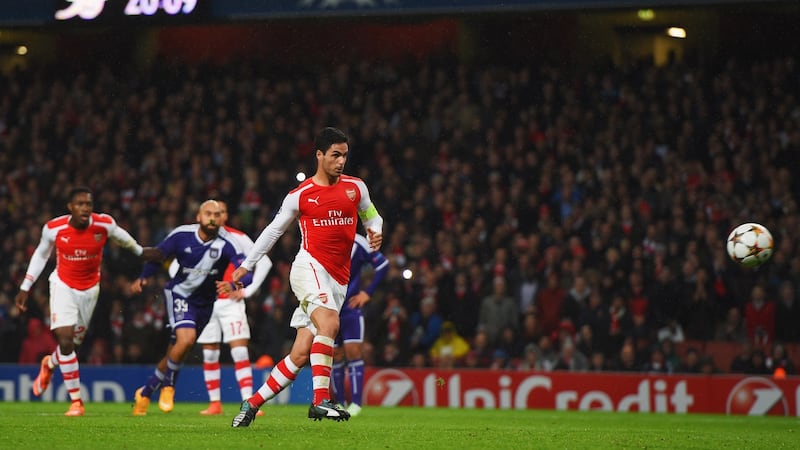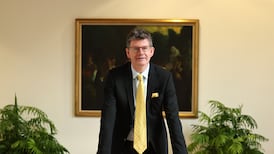Two Saturdays, two prodigies: last weekend you could feel the buzz on Fulham Palace Road as 23,000 gathered in west London for Fulham versus Wolves at the top of the Championship.
Both sets of supporters had reason for excitement – Wolverhampton's due to their table-topping revival; Fulham's because of their progress into the play-off places on a seven-game unbeaten run. That and a 17 year-old called Ryan Sessegnon.
Soon it would eight games unbeaten as Fulham won 2-0. Seven minutes before half-time Sessegnon scored the first, his 13th goal of the season.
The scoreline was the same against Aston Villa at Craven Cottage a week earlier. Then, too, Sessegnon got the opener. Scoring the first goal in big games is different from tapping in the fourth against lowly opposition. It says something about Sessegnon's maturity.
It also says something about his ability that he is scoring these goals from either left wing or left midfield, not from a number nine position. Sessegnon is, in fact, Fulham’s number three. He has played left-back.
He is being mentioned so frequently in terms of the past - compared to Ashley Cole and David Alaba – and the future – potential suitors range from Manchester United to Liverpool to Real Madrid – that it is worth repeating Sessegnon is a teenager. He was born this century.
The Fulham manager Slavisa Jokanovic has repeated this week that Sessegnon would be better staying at the club than moving too soon. Should, as has also been said this week, Tottenham turn up with a £35 million cheque in June, the decision may above Jokanovic's head.
It is shaping up to be a pivotal moment in the life and career of a teenage boy. And for all Sessegnon’s maturity, that is what he is, a boy.
Most-wanted boy
That thought was emphasised by the sight the previous weekend of another who was once the most-wanted boy in England. His name is George Green.
Two Saturdays ago, Green's name was read out on the Nuneaton Town teamsheet at a ground he had probably never heard of until he got there – Spennymoor Town's Brewery Field in County Durham.
This was the National League North, England's sixth tier. It offered a contrast to Craven Cottage.
There were 852 paying spectators at Spennymoor squinting into a low sun at a helter-skelter game on a lumpy pitch. Nuneaton won 1-0, if you’re interested.
In the thick of it was an agitated number 10, all deft left-foot, waving arms and chuntering at team-mates and referee. It was obvious this was someone who had played at a higher level and, quite possibly, was prepared to let others know it. As the first half progressed the realisation dawned that here at Spennymoor was George Green.

But this was not the George Green of a thousand chief-scout whispers six or seven years ago, who was whipped away from Bradford City by Everton at 15, this was George Green who had his 22nd birthday in January.
At this age Green was expected to be excelling in the Premier League, a midfielder cut from the same measurements and texture of cloth as Phil Foden.
At Under-16, U-17 and U-18, Green played for England, just as Foden has, just as Sessegnon has. Green had the same career trajectory, or so it was assumed.
That is why at 15 Everton, who know about youth development, signed him from Bradford for an initial £300,000 that was to rise to £2 million.
"George is the best I've seen in his position at his age," a Bradford City youth coach told the local paper. "He could become another Wayne Rooney or Paul Gascoigne. "
It was not an isolated opinion of Green. At least there was some circumspection from Everton's Academy director, Alan Irvine. "He has got good potential, but at the moment that's all it is," Irvine said of Green.
This was just over six years ago. At 22 Green is hardly a veteran, yet Nuneaton Town is his eighth club since Everton. Irvine’s caution was correct.
Unfortunately the claims of others were not, or they were premature. “I wasn’t ready, emotionally or physically to play in the first team,” Green said over the phone on Friday. “At 17, I thought I was ready, but I know now I wasn’t.
“I’ve watched Sessegnon a few times and he’s ready, he’s grasped it. All I’d say to him is to be grounded, don’t throw it away, which is basically what I did. And if he goes somewhere like Spurs I’m sure they’ll have support that wasn’t around even six years ago.”
Green retains optimism. It is only three years since he first left Everton, sent out on loan to Tranmere Rovers. Three months later Green joined Oldham Athletic on a free transfer, then moved, or maybe lurched, back to his local league club Ossett Albion after four months.
Some could not believe this. Just two years ago Green went to Burnley, scored a hat-trick in a trial match and was thought to be on the way back up. He said so. Six months later he was at Kilmarnock.
The one-time prodigy was all over the place. After that it was down, literally, to Salford City, then over to Norway with Viking Stavanger. As of February 2nd, it's Nuneaton in the sixth tier of English football.
To compare George Green with Ryan Sessegnon might seem a leap too far, a mere co-incidence of consecutive Saturdays. As things are, it is inconceivable that Sessegnon will not be a leading Premier League player at 22.
But then, that’s what was said about Green.
It’s all Arteta’s fault
The mention of Mikel Arteta as a possible successor to Arsene Wenger at Arsenal brings a reminder of Arteta's place in the unravelling of the club.
It was hardly Arteta’s fault, but in August 2011 he was part of a last-minute transfer rush of signings by Wenger that raised questions about the manager’s planning and realism.
A week earlier Arsenal had lost Samir Nasri to Manchester City. That came on top of Cesc Fabregas leaving for Barcelona.
Both of those transfers seemed inevitable and yet Arsenal did not have replacements in the building. Thus they began the league season drawing 0-0 at Newcastle before losing 2-0 at home to Liverpool. Then came Manchester United 8 Arsenal 2.
Wenger had Gilles Sunu, Ignasi Miquel, Oguzhan Ozyakup on the bench. Wayne Rooney scored a hat-trick. Planning and realism.
Forty-eight hours later, Arteta arrived along with Per Mertesacker, Andre Santos and Yossi Benayoun. It was most definitely a moment in terms of Wenger's reputation.
As a coach at City, we assume Arteta has seen how Pep Guardiola plans. And that Arteta recalls August 2011.















